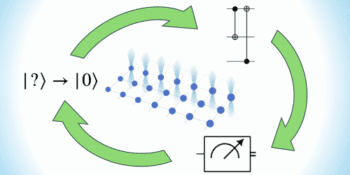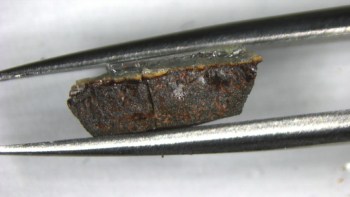
The curvature of a gravitational field across a distance of about 1 m has been measured for the first time by studying clouds of ultracold atoms interfering with one another in the presence of large, nearby masses. The measurement – made by physicists in Italy and the Netherlands – could be used to make better maps of the Earth’s gravitational field, search for oil and provide a new way of measuring the Newtonian constant of gravity.
Atom interferometry has been used for more than a decade to study gravity – the basic idea being to fire a series of upward and downward laser pulses at a cloud of ultracold atoms held in an evacuated vertical column. The lasers split the atoms into two clouds that travel upwards at different rates and so reach different heights over a certain time. Governed as they are by quantum mechanics, the atoms behave like waves, and so the two clouds become slightly out of phase as a result of taking two different paths.
Using further laser pulses, the clouds are made to recombine at a certain point in the column, with the interference between the atoms revealing the phase difference between the clouds. This phase shift is related to the gravitational field experienced by the atoms, which can therefore be calculated. Last year a group led by Guglielmo Tino of the University of Florence extended this idea by making simultaneous measurements on two such “gravimeters” separated by a vertical distance of about 50 cm.
Measuring Newton’s G
To ensure that there was a measurable gravitational effect on the atoms, the researchers surrounded the vacuum column with large cylindrical masses. The gradient of the field was then the difference in gravitational field at the two locations divided by the distance between the two gravimeters. From the gradient and the gravitational field of the masses, Tino and colleagues then worked out a value for Newton’s gravitational constant G, which defines the gravitational attraction between two masses.
Tino and colleagues in Florence, the University of Bologna and the European Space Agency in Noordwijk, have now used the same apparatus to measure gravity at not two different heights but three. This has let them measure the change in the gravitational gradient as a function of height – its curvature – caused by the large masses near the trajectories of the clouds. The experiment also allows two simultaneous measurements of G to be made, something that could shed light on an important mystery surrounding the value of G.
G is a notoriously difficult fundamental constant to measure, and is currently defined to four significant figures, which is much less precise than other fundamental constants. While several different experimental techniques have been used to measure G in labs around the world, they give results that disagree to a much larger degree than the known experimental uncertainties of each measurement. This suggests that either unknown systematic effects are at work or, tantalizingly, that G is not necessarily constant in space or time.
Better gravity maps
Tino’s set-up could also, in principle, be used to make very accurate measurements of how the Earth’s gravitational field changes from location to location. This would improve the spatial resolution of gravity anomaly maps of the Earth, which are used to locate underground oil and mineral reserves.
Tino and colleagues are now looking at how they could further extend their system to include multiple interferometers that could be used to measure high-order derivatives of the gravitational field.
The experiment is described in Physical Review Letters.



